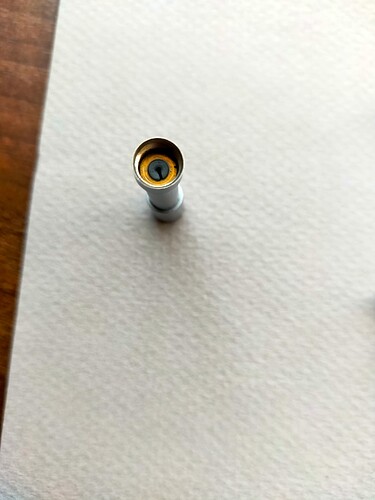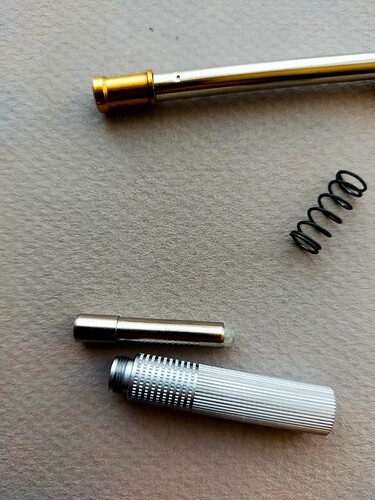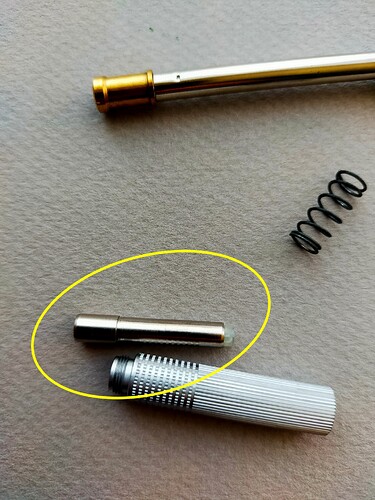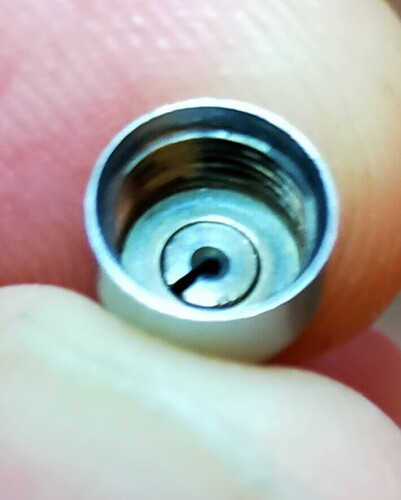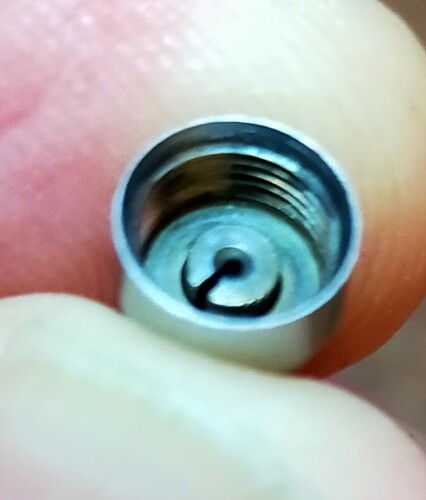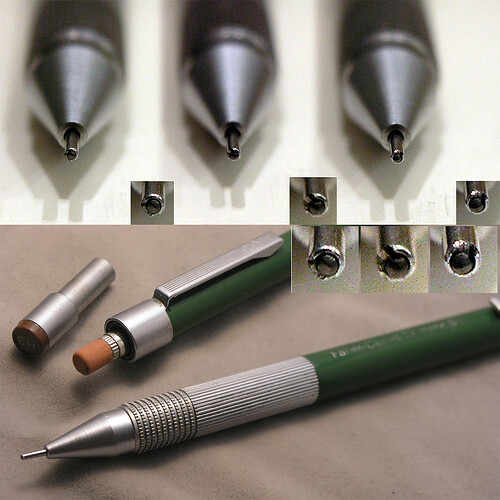I’ve made it work. Short story: WD-40 and patience.
Long story: after my last post in this thread I picked up another TK Matic on Vinted for 19 euros shipped. It’s an earlier version with all metal internals. A lot more wear on it than the first one, plus the grip cannot be unscrewed, just the cone comes off, but it is functional, so I noticed that when it has no lead in it, the lead pipe retracts by about 1 mm if pushed with the finger, and rebounds fast, like if it had a spring inside. Same action with the cone removed shows that in its rear the circular piece in the middle moves together with the lead pipe, back and forth.
On the non working example I had to press it against the desk to retract maybe half a mm and it would not go back until I pressed the knock. So I took the cone off and sprayed WD-40 on it. The lead pipe could now be pushed easier, with the finger, but it did not rebound.
I let it sit for a few days and than began pushing again and it started to move. Ran a lead trough it a few times, both ways, and it came out with a little bit of textile fibers, blacked by graphite dust and oiled with WD-40.
The mechanism worked while empty, but I could still feel some friction. Assembled and with lead in it, during writing the lead pipe would slowly retract and stop feeding lead.
Put it aside again for a few days, took it apart sunday evening, fiddled with the lead pipe, pushed again a lead trough it by hand and got slightly more debris out. Now it works beautifully, no friction, feeds lead consistently and it is very smooth on paper, not scratchy or “ballpoint feel”. It is smoother than my lightly used Pilot S-30, and definitely smoother than the second TK-Matic I got.
Very happy with the result. All the debris I got out amounted, maybe, to a human hair thickness and a few mm long. Goes to show how sensitive (and precisely built) is the whole mechanism. I wouldn’t store it without lead inside, and certainly not keep it in a textile pouch or clothes pocket.
Below photos of the rear of the cone on the all metal internals showing the amount of play when pressing the lead pipe.
